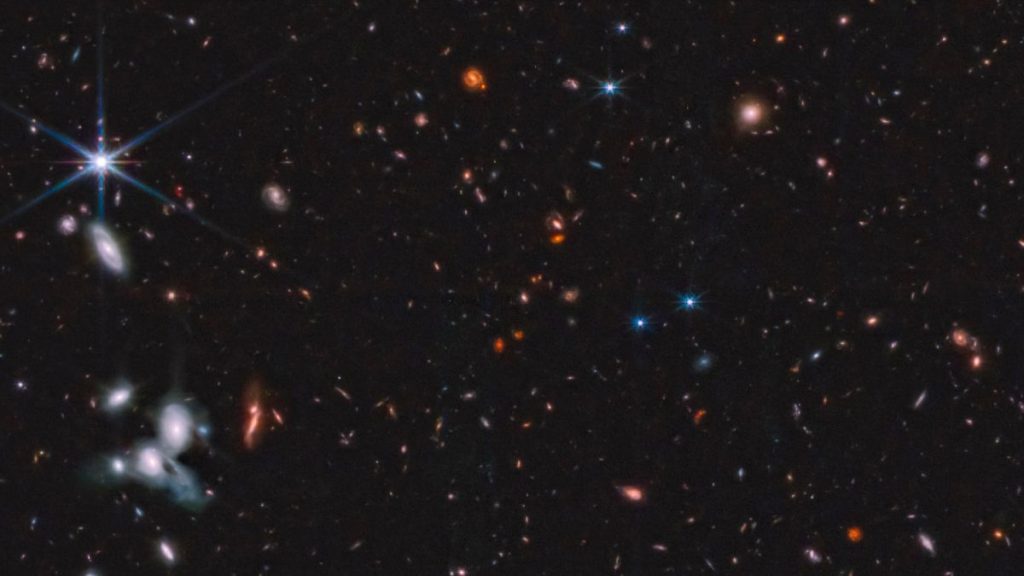The wonders of deep space have never looked this good.
A team of scientists working with data from the have released a colossal mosaic of images from the NASA James Webb Space Telescope. The image from the Cosmic Evolution Early Release Science Survey (CEERS) (opens in new tab) collaboration is a mosaic formed from 690 individual frames taken with JWST’s Near Infrared Camera (NIRCam).
The Epoch 1 image, as it is known, shows distant galaxies whose light has shifted from visible to infrared light during its journey through time and space, and captures a series of curiosities that are no doubt inspiring further study.
Related: NASA’s James Webb Space Telescope mission: Live updates
“Epoch 1 covers less than half of our total survey area on the sky,” a CEERS press statement notes, adding that “already the images have led to new discoveries and an unexpected, but not unwelcome, abundance of never-before-seen galaxies.”
These include a highly-redshifted object — named Maisie’s galaxy for the daughter of project head Steven Finkelstein — that may be one of the earliest galaxies ever observed, appearing as it was less than 400 million years after the Big Bang.
Other wonders noted by the CEERS team are an arc of smaller galaxies close to a bright galaxy, interacting spiral galaxies, a supernova and a grouping of red galaxies.
The image can be explored at the CEERS project pages (opens in new tab), in both medium and high resolution. However, the collaboration recommends that you do this on a desktop computer or laptop rather than your phone, as this file is very large (262 MB).
There’s still much more to come from CEERS. Team member Rebecca Larson, an astrophysicist and National Science Foundation fellow, said on Twitter (opens in new tab) that the collaboration is still less than halfway through its full survey, which is designed to test making extragalactic surveys even while JWST is conducting other observations.
“Already our data have led to new discoveries and an unexpected, but not unwelcome, abundance of never-before-seen galaxies,” Larson wrote.
Follow us on Twitter @Spacedotcom (opens in new tab) or on Facebook (opens in new tab).

